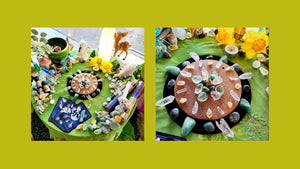Matariki 2024

MATARIKI THE NAME OF MATARIKI IN ENGLISH and MĀORI
In Māori, the star cluster, which we call the Pleiades, is called Matariki. The celebration of its first rising in late June or early July is also called Mataraki and this marks the beginning of the new year in the Māori lunar calendar.
Matariki used to be celebrated for a period of nights during the last quarter of the moon of the lunar month Pipiri (around June). These nights are known as “the nights of Tangaroa”. Some Māori use the rise of Puanga (Rigel) or other stars to mark the new year. This year the public holiday is on Friday 28th June 2024.
NAMES AND ASSOCIATIONS OF THE STARS
The above chart shows the stars of Matariki with the Māori names of the most important nine, along with the Greek names, which European astronomers use for them. The genders and associations of these nine stars are as follows: Matariki (f), wellbeing and health; Tupu-ā-rangi (m), food that comes from above; Tupu-ā-nuku (f), food that grows in the soil; Ururangi (m), the winds; Waipunā-ā-rangi (f), rainwater; Hiwa-i-te-rangi (f), growth and prosperity; Waitī (f), fresh water; Waitā (m), the ocean; Pōhutukawa (f), the deceased.
ETYMOLOGY
Matariki is short for Ngā mata o te ariki o Tāwhirimātea meaning "the eyes of the god Tāwhirimātea". In Māori mythology, Tāwhirimātea, the god of wind and weather, was enraged by the separation of his parents Ranginui (heaven) and Papatūānuku (earth) by his brothers. Tāwhirimātea tore out his eyes and threw them into the sky to show his contempt towards his brothers. He then fled to the sky to live with Ranginui. This is how Matariki got its name. Matariki is sometimes incorrectly translated as mata riki ("little eyes"). The same cluster of stars has the same or similar name in many other Polynesian cultures.
WHEN IS MATARIKI?
The star cluster Matariki (Pleiades) is visible for most of the year in New Zealand, except for approximately a month in the middle of winter. Matariki finally sets in the early evening in May, and reappears just before sunrise in late June or early July. This marks the beginning of the first month of the Māori lunar calendar, Pipiri (meaning “to huddle together”). As a signal of the start of a new year, Matariki is known as te whetū o te tau ("the star of the year").
WHY THE DATE CHANGES?
The date seems to move around, because the Gregorian Calendar and the Māori calendar don’t map onto each other exactly. The Gregorian Calendar is a solar calendar with about 365 days in the year, because the earth takes about 365.24 days to revolve around the sun. Most of our months are lengthened to 30 or 31 days, in order to fit in with a year of 365 days. The Māori Calendar is a lunar calendar with 12 months of 29.5 days, which adds up to a year of 354 days. In order to prevent the calendar from slipping forward by 11 days every year, a thirteenth month is intercalated every so often. This keeps the Māori Calendar roughly in step with our revolution around the sun. European astronomers call this a solar adjustment. So, the Māori Calendar is a lunar calendar with solar adjustment. This is why the day of Matariki moves backwards and forwards in the Gregorian calendar just like Easter moves around. Māori use this solar calendar to find the best times for hunting and fishing, as many creatures react to the lunar cycle.
SIGNIFICANCE OF MATARIKI
The main significance of Matariki is that it marks the beginning of a new year in the Māori Calendar. Matariki is a time to mourn the deceased, celebrate the present and prepare the ground for the coming year. It is considered to be a good time to teach young people about the lore of the land and the forest.
CELEBRATION OF MATARIKI
The Matariki ceremony has three parts; viewing the stars, remembering the deceased and making a food offering to the stars. Traditionally, the viewing of Matariki was done over three or four nights to ensure a clear view of the stars. Festivities would begin on the first clear night. The observation of the stars of Matariki would be used to make forecasts for the coming year. For example, if the stars shone clear and bright, the remainder of the winter would be warm but if they were hazy or twinkling, there would be bad weather during the season. The colour, brightness and distinctiveness of each of the nine stars would be assessed and forecasts would be made according to the associations of each star. For example, as Pōhutukawa was associated with the deceased, its brightness would indicate the number of people likely to pass away in the coming year. These predictions would be made by tohunga skilled in astronomical learning.
After the forecasts for the year, the deceased would be invoked with laments and the names of all, who had passed since Matariki’s previous rising would be recited. In traditional Māori belief, the spirits of the dead were collected during the year and led into the afterlife at the setting of Matariki in the month of Haratua. At the rise of Matariki at the start of the year, they were led from the underworld and set in the night sky to become stars. This was accompanied by prayers and the recital of their names.
The ceremony concluded with an offering of food to the stars. This is done by making a small hāngī. The food was chosen to correspond to the associations of the stars of Matariki. When the cooked food was uncovered, steam rose into the sky as the hautapu or sacred offering. The food offering ends at sunrise.
The Matariki ceremony was traditionally followed by several days of festivities, including song, dance and feasting, celebrating life, prosperity and the promise of the year to come.
DECLINE AND RESTORATION
During the late 19th and early 20th centuries the observance of Matariki fell into decline. The restoration of Matariki began in the early 1990’s with the celebration of Matariki by various bodies. Eventually there were calls to make it a public holiday. Our first Matariki as a public holiday was on 24th June 2022.
OUR FIRST INDIGENOUS HOLIDAY
Matariki is the first indigenous public holiday in the whole world. As such, it is something that we can all be proud of and should be prepared to defend.
THINGS TO DO
Here are some ideas about things that you can do to celebrate Matariki.
- Go to an organized Matariki event. Events organized by Māori will be the most authentic ones.
- Get up early and try to spot the star cluster Matariki rising in the east before the sun rises. This will be an early start, as the sun rises at about 7:30 am around Matariki.
- Make a wish on Hiwa-i-te-rangi, also known just as Hiwa, youngest of Matariki's children and considered to be the "wishing star".
- Remember dear departed one’s, perhaps with a visit to their resting places. Flowers, bought or from your garden, might be a nice idea. You can tidy up their resting places. It can be a good opportunity to tell young ones about their ancestors. Don’t forget to pay your respects to those who have passed during the last year.
- Matariki is a good time to teach young people about nature. So, you might want to spend some time enjoying nature and teaching youngsters about the animals and plants. You don’t need to go on a road trip to do this. You can observe nature from your own backyard. Make sure that the youngsters understand how important nature is to our wellbeing.
- As the Matariki ceremony is followed by several days of festivity, you may like to organise a special meal for the family. It doesn’t have to be anything elaborate. The most important thing is to spend quality time together with the family. You could even keep the expense down by inviting some friends or family over to share the costs.
- Tags: significant days






